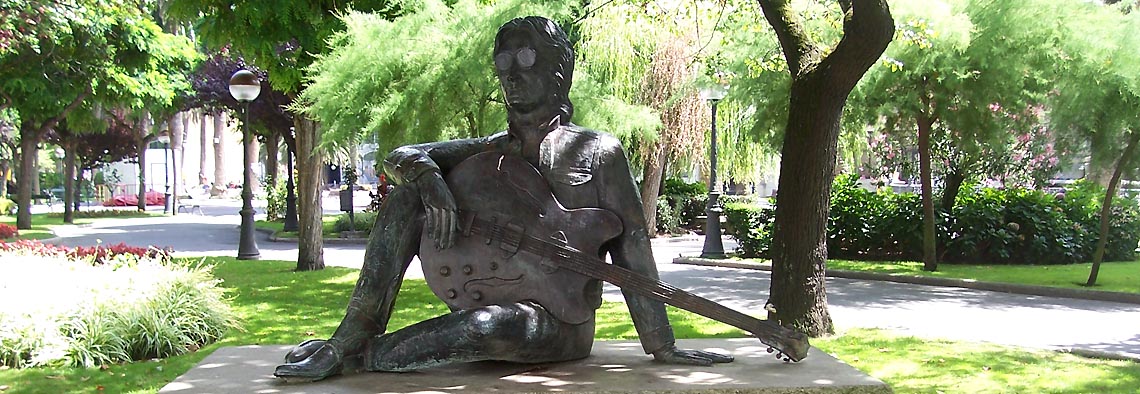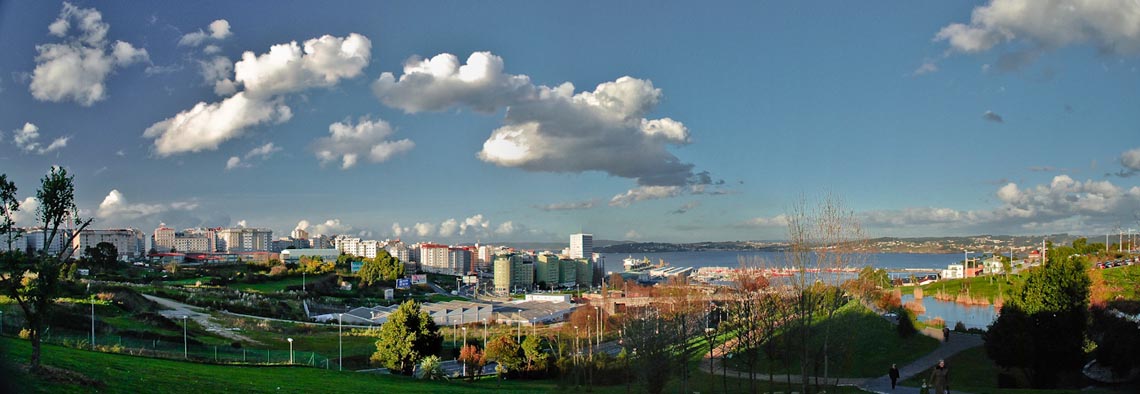Ghosts Of London's Past
14 April, 2014
Por Michael Schuermann de Easy Hiker
London is a great city for hikers. For one because there are so many scenic trails and nature reserves near-by – the Ridgeway, the South Downs Way, the New Forest – and for another because they are all so easy and convenient to reach by what is probably the world’s best public transport system. (I know the London urban and suburban rail networks get a lot of stick, but I still have to find another city in the world where it is as easy to get around even if you have no car.)
We will spend more time in London in the near future and intend to explore the walking trails of the area in some detail, although the more serious hiking trips will have to wait until the spring.
For the time being, however, we will keep things simple and start you off this week with two short walksalong the Thames, one in the east and one in the west, each roughly two to three hours long, allowing you to set out late, after a leisurely breakfast on a weekend for example, and still be back in time “for tea” to watch the afternoon soccer game “on the telly”. Are you still with me, “guv”?
Ghosts of London Past
Wapping in the east of the city has always been my favourite part of “walking London”. I have done this walk several times over the past twenty years or so, but it was never the same walk – because the area has changed and still changes so quickly.
This stretch of London – between the Tower and Greenwich – was once the most important hub of global trade, the place where shiploads after shiploads of coffee, tobacco and sugar from the British colonies arrived on their way to the European consumers.
The London docks were abandoned in the 1960s, and the area lay fallow, a barren industrial wasteland, for twenty years before it was redeveloped in the 1980s. When I came here first, a little over twenty years ago, this process was still very much ongoing, and the “docklands” at the time were a surreal blend of derelict industrial buildings, waste dumps, modern office developments and handsome 19th century mansions.
Nowadays, the docklands are very trendy and chic, but they are still nothing like similarly trendy and chic areas of West London. They are, for one, much less lively. Wapping High Street is a residential area, but when we went there, on a Saturday around lunchtime, we were almost the only people in the street, give or take the odd jogger. Between old warehouses, centuries-old taverns and narrow stairways that lead down to the river, you feel that ghosts are walking with you every step of the way.
Our walk starts at St. Katharine Docks in the back of Tower Hill station. Walk down the stairs on your left hand side, turn left in front of the moat of the Tower of London and simply follow the signs.
The three basins of St. Katharine Docks were developed in the 1820s when one of the largest London slums – with over 10,000 inhabitants – was razed to the ground. (The rubble of the destroyed dwellings, ironically, was used to lay the foundations for one of London’s most luxurious property development projects in Belgravia.)
The St. Katharine Docks were never a great commercial success – the gates to the river Thames were too narrow, preventing larger ships from entering – and, having been heavily bombed in WWII, never fully rebuilt and gradually abandoned.
They became, however, also the first of the London docks to be redeveloped as a leisure-plus-retail facility and the blueprint for all such projects since, in the capital and all across Britain. They are a very pretty sight indeed, particularly on a sunny day. (Unfortunately, we were not quite so lucky on our walk.)
Leave St. Katharine Docks in the back of the Dickens Inn through Thomas More Street and turn left into Wapping High Street along the Thames. Look out for Wapping Pier Head, two early 19th century brick buildings that were erected right on the entrance to the docks to accommodate leading dock officials and their families …
… and, a few houses down the road, the ancient Town of Ramsgate pub. The Wapping Old Stairs beside the pub – they lead down to the river – are said to be haunted: for many men, convicts on their way to Australia and drunks who were imprisoned in the pub’s cellar before being “press-ganged” into the navy, these stairs would have been the last things they ever saw of England.
A little further on, in the garden next to the modern HQ of the London River Police, the City of London used to execute pirates – not removing their bodies before three high tides had washed over them, as a kind of deterrent presumably. The infamous Captain Kidd was hanged here in 1701, and a couple of blocks down, there is a pub that was named in his honour. (Go check it out. It has stunning views over the Thames.)
Continue past some more old warehouses before turning right into Wapping Wall – look for London’s oldest riverside pub, the Prospect of Whitby – and crossing the bridge into Shadwell. (Another modern development, called Shadwell Basin, appears on your left.)
Immediately after the bridge, turn right in the direction of King Edward VII Memorial Park, and continue by the bank of the river with some spectacular views of Canary Wharf in the distance.
Turn left into Spert Street for Limehouse Basin, where this walk ends. There is a DLR station on your left hand side from where the trains of the “Docklands Light Railway” take you back into the centre of London within a few minutes.
By Michael Schuermann de Easy Hiker
Does this make you want to go? Do it! Check out our prices here!
14 April, 2014







